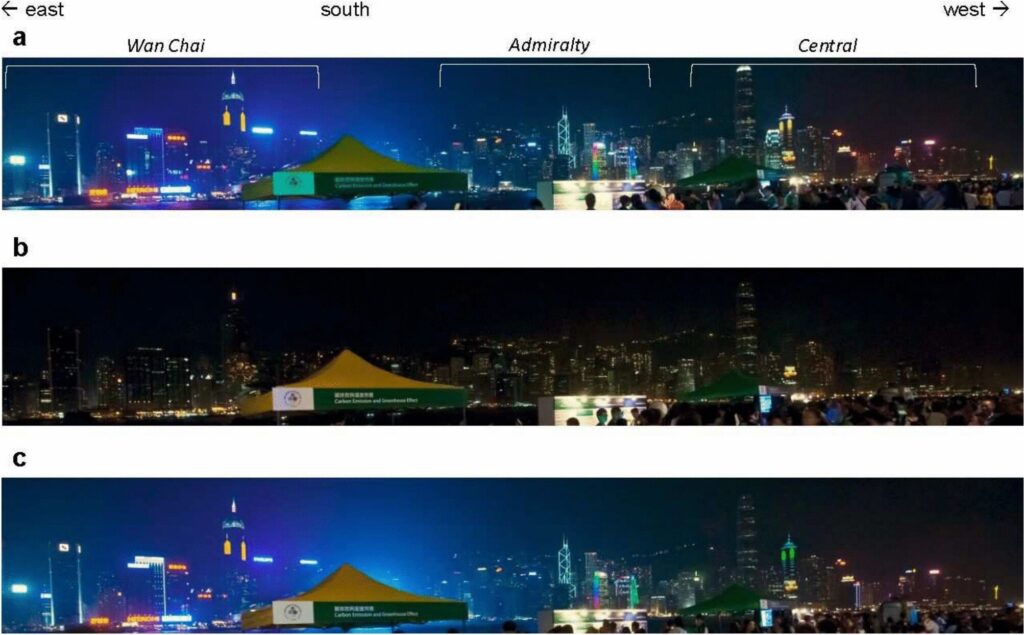
When millions of people turn off their lights for Earth Hour each year, something remarkable happens in the night sky above cities. New research from Hong Kong, published in Scientific Reports, shows that just a small number of decorative buildings and advertising boards can dramatically brighten the entire urban night sky. When these lights go dark, the sky becomes up to 50% darker.
The scientists studied 14 years of Earth Hour data from 2011 to 2024 in Hong Kong, using specialized light sensors to measure exactly how much the night sky changed when the city participated in the global lights-out event. The findings reveal that turning off lights in central business districts, particularly the decorative lighting on building facades and large LED advertising screens, had the most significant impact on night sky darkness.
Understanding the Sources of Light Pollution
Using crowdsourced photographs from social media, researchers pinpointed which buildings went dark during Earth Hour and correlated this with measurements of sky brightness. Interestingly, the weekend lighting patterns during Earth Hour remained largely unchanged, suggesting that the dramatic darkening came specifically from commercial and decorative lighting rather than everyday residential use. This finding challenges common assumptions about what contributes most to light pollution in cities.
The researchers didn’t just measure overall brightness; they analyzed the specific colors of light pollution using spectroscopic sensors. They found that the biggest reductions occurred in blue-green wavelengths (445–500 nanometers), green (500–540 nanometers), and orange-red (615–650 nanometers) ranges. These correspond precisely to the peak emissions from LED advertising boards that dominate many urban landscapes.
“The study demonstrates that Earth Hour serves as more than just a symbolic gesture—it provides valuable scientific data about urban lighting and its impacts.”
Implications for Urban Planning and Environmental Policy
This research finally offers hope for tackling light pollution without requiring massive citywide changes. Instead of asking every building to dim their lights, cities could achieve substantial improvements by focusing on a relatively small number of high-impact sources. The findings are particularly relevant as cities worldwide grapple with the environmental and health impacts of light pollution.
Excessive artificial light at night disrupts wildlife migration patterns, affects plant growth cycles, and interferes with human sleep patterns. For astronomers and stargazers, urban light pollution makes it nearly impossible to observe celestial objects from city centers.
Targeted Solutions for a Brighter Future
For policymakers, this research offers a roadmap for effective light pollution reduction. Rather than implementing blanket restrictions on all outdoor lighting, cities can focus their efforts on regulating the brightest decorative and commercial lighting that has the greatest impact on night sky visibility. The researchers conclude that their work highlights the importance of targeted light pollution solutions.
As cities continue to grow and evolve, understanding exactly which lights matter most for nighttime darkness will be crucial for creating more sustainable urban environments that benefit both people and the natural world.
More information: Chu Wing So et al, “Natural experiments from Earth Hour reveal urban night sky being drastically lit up by few decorative buildings,” Scientific Reports (2025). DOI: 10.1038/s41598-025-05279-4
The study underscores the potential of Earth Hour as a tool for scientific inquiry, providing insights that could lead to more effective strategies for reducing light pollution and its adverse effects on the environment and human health.







